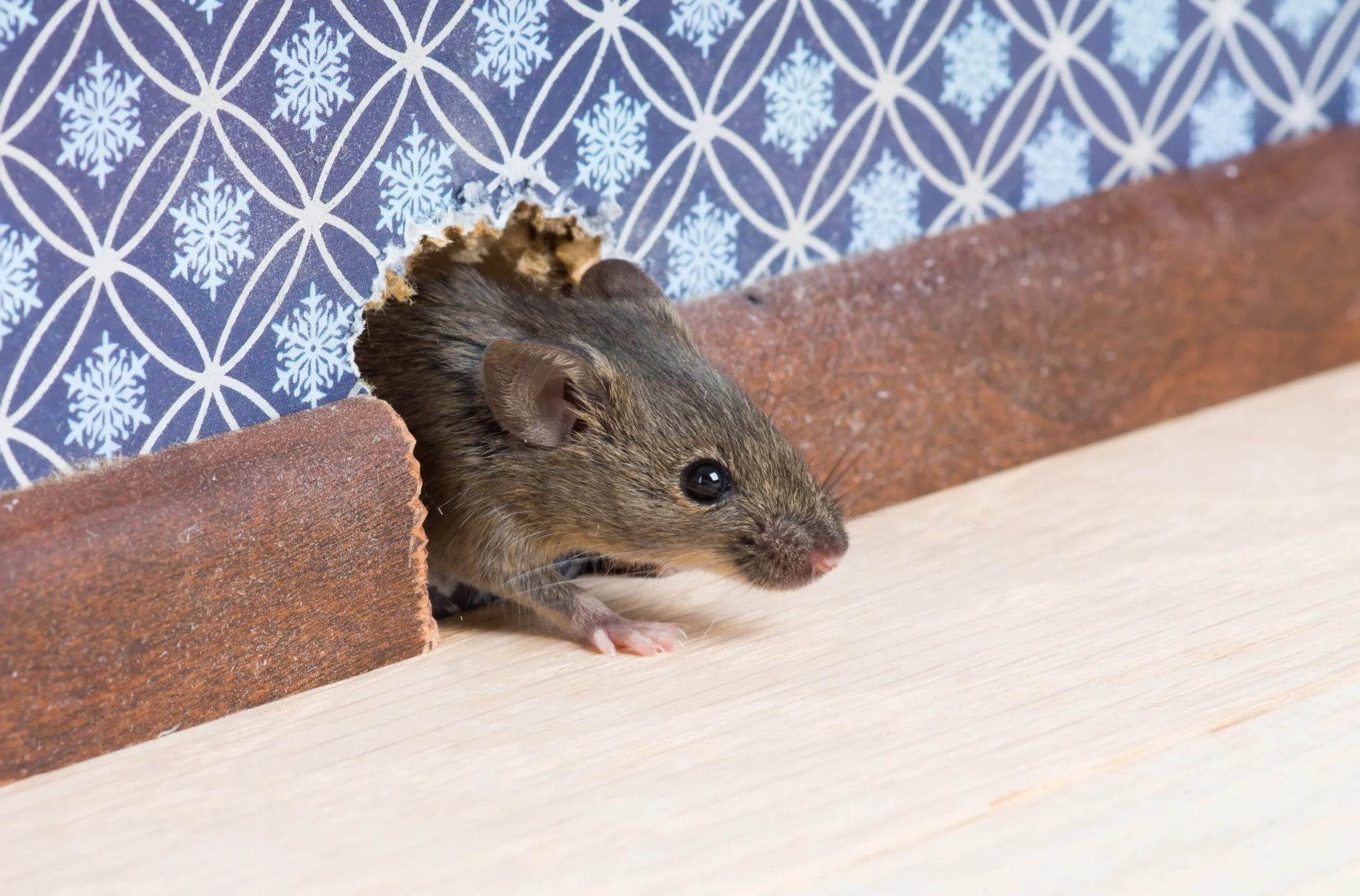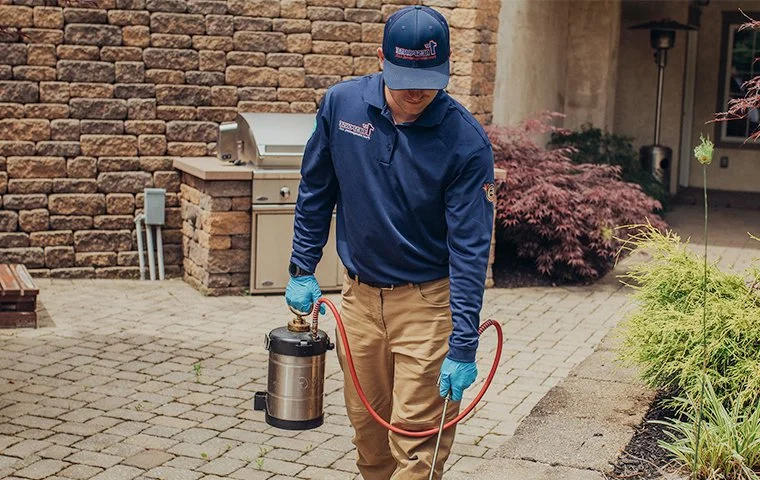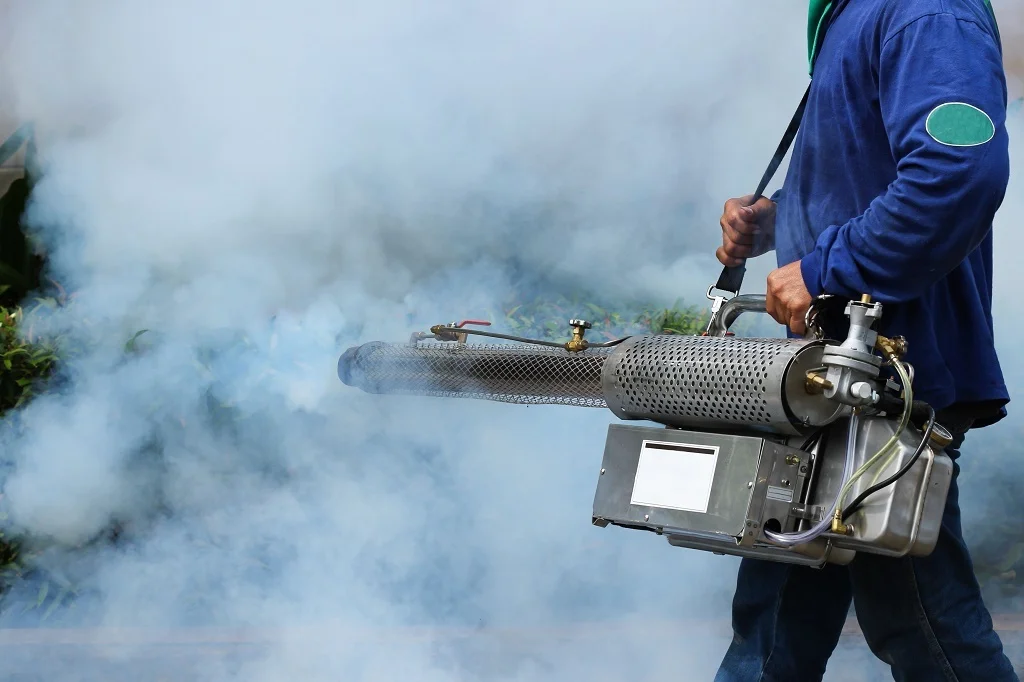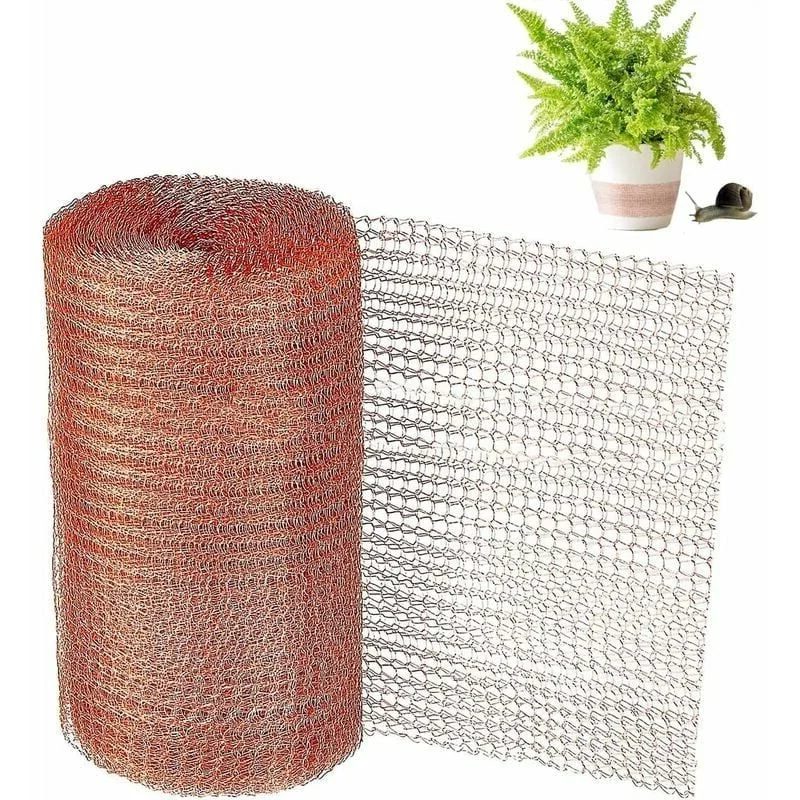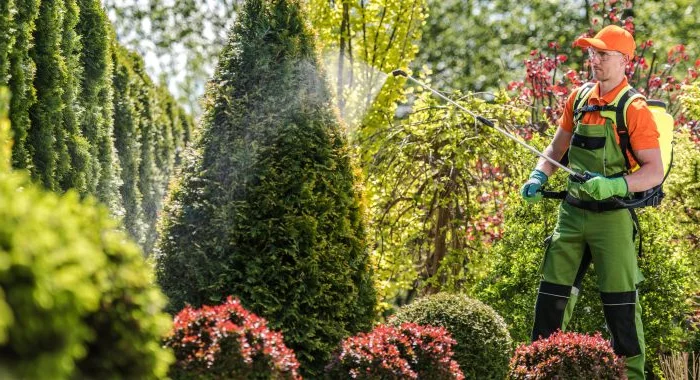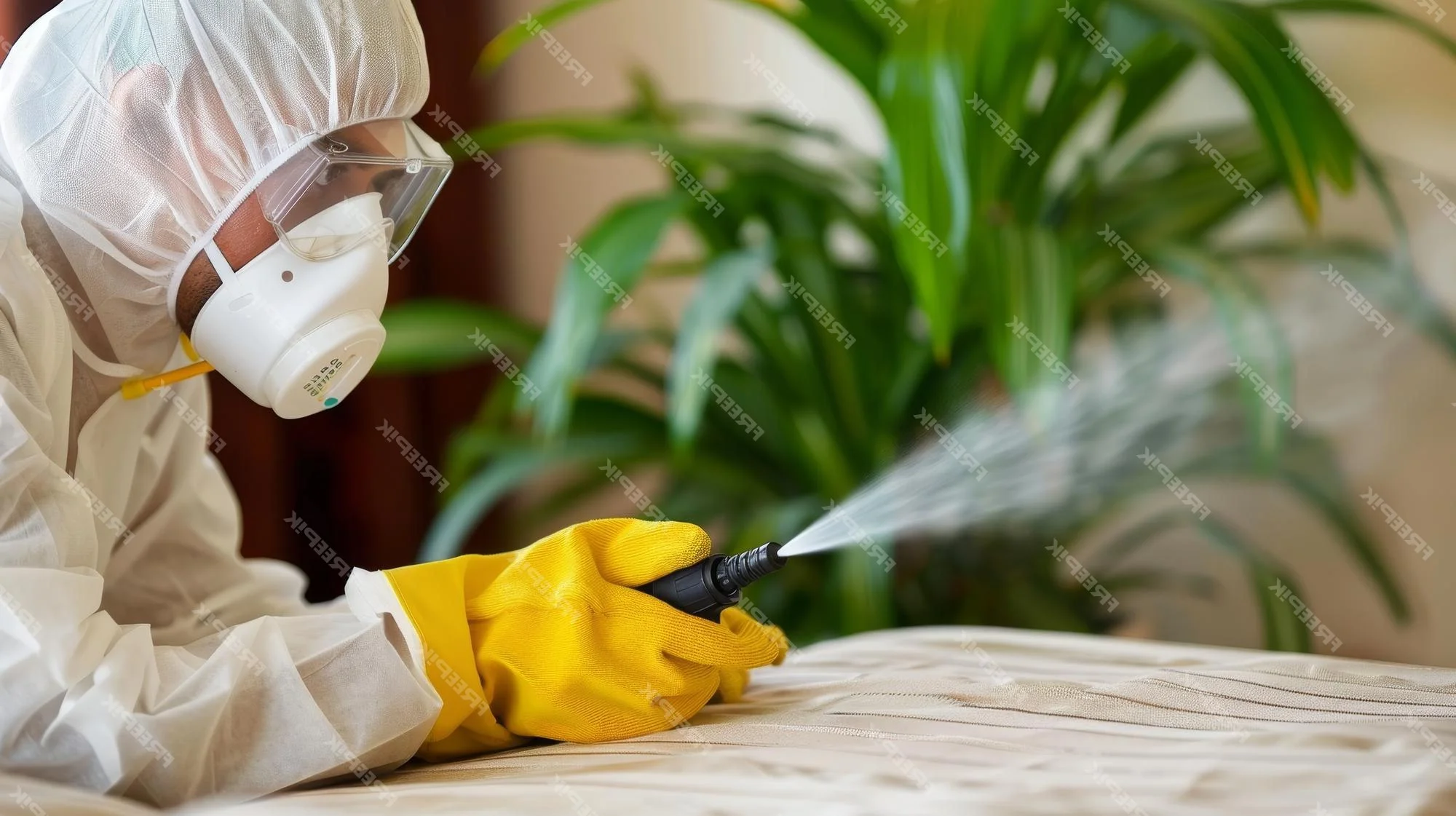From the rolling prairies and agricultural heartland to the Mississippi River corridor and growing urban centers, Iowa presents distinct pest challenges influenced by the state's unique blend of farming landscapes and developing communities. The Hawkeye State's four-season climate—characterized by humid summers and cold winters with distinct seasonal transitions—creates ideal conditions for various pest species, whose activity patterns follow predictable seasonal cycles. Effective pest control in Iowa requires specialized knowledge of these regional ecosystems, agricultural influences, and targeted approaches based on property location and surrounding environments.
Properties throughout Iowa face ongoing pest pressures that can damage structures, affect health, compromise agricultural productivity, and diminish quality of life in both rural and urban settings. Whether addressing rodent issues in Des Moines neighborhoods, controlling wood-destroying insects in historic river towns, or managing agricultural pests that affect rural communities, local professional exterminators deliver expertise specifically tailored to Iowa's regional challenges. This guide explores common Hawkeye State pest problems, effective control methods including eco-friendly pest solutions, and why Iowa's distinctive environmental conditions make professional knowledge invaluable for sustainable pest management.
Dealing with persistent Iowa pests? Our Hawkeye State specialists offer
emergency pest control
24/7 and thorough
property inspections throughout Iowa.
Contact us today for prompt assistance!
Pest Control Challenges Specific to Iowa
Iowa's unique environment creates distinctive pest control challenges that require specialized approaches. Here's why pest management in the Hawkeye State demands expert attention:
-
Agricultural dominance Iowa's position as America's agricultural powerhouse directly influences pest dynamics statewide. Extensive corn, soybean, and grain production creates pest reservoirs that periodically affect residential properties, particularly during planting and harvest cycles when field disturbances trigger pest movements. Storage facilities for agricultural products also support certain pest populations that can spread to surrounding communities.
-
Seasonal extremes Iowa experiences true four-season weather with temperature variations exceeding 100 degrees annually. These dramatic seasonal shifts drive pronounced pest behavior cycles—spring emergence, summer population explosions, fall invasion periods, and winter shelter-seeking behaviors—each requiring precisely timed prevention strategies aligned with Iowa's climate patterns.
-
Riverway corridors The Mississippi and Missouri Rivers that border Iowa, along with numerous interior waterways, create moisture-rich environments supporting mosquito breeding and fostering conditions for moisture-dependent pests like termites. Properties near these waterways face increased pressure from specific pest species, while river towns often contend with unique challenges related to seasonal flooding and water-influenced pest movements.
-
Diverse housing stock Iowa features a mix of historic structures in established communities, mid-century homes in suburban developments, farm properties in rural areas, and newer construction in expanding urban zones. This architectural diversity creates varied pest vulnerabilities based on construction methods, foundation types, and building materials, requiring tailored inspection and treatment approaches for each property type.
-
Urban-rural interfaces Iowa's growing cities and suburbs increasingly border agricultural operations and natural areas, creating transition zones where displaced pests from disturbed habitats seek new territory. These urban-rural boundaries experience unique pest pressures as development continues, particularly in expanding communities around Des Moines, Cedar Rapids, and other growing population centers.
Understanding these Iowa-specific challenges is crucial for effective pest management. Professional pest control services develop customized treatment plans that address these regional factors, providing targeted protection for the Hawkeye State's distinctive environmental conditions.
Common Pests in Iowa
Iowa's varied landscapes and four-season climate support numerous pest species that impact properties differently based on location, season, and surrounding environment. Here are the most common invaders that plague the Hawkeye State:
Rodents
Professional rodent control measures being implemented at an Iowa home
Iowa's agricultural landscape and distinct seasonal changes create ideal conditions for several rodent species. House mice and Norway rats commonly affect urban properties, while deer mice and field mice more frequently impact rural homes, especially properties near farming operations. Rodent activity intensifies during fall and winter as cooling temperatures drive these pests indoors seeking warmth and shelter, with invasion pressure particularly strong after harvest activities displace field populations.
Effective rodent control combines thorough inspection to identify entry points, harborage areas, and activity patterns with strategic exclusion work to seal potential access routes. Professional programs incorporate targeted trapping systems, protected baiting methods where appropriate, and ongoing monitoring to prevent reinfestation. For Iowa's many older homes, specialized approaches address complex structural features that can harbor rodents, while rural properties benefit from perimeter protection strategies during critical seasonal transition periods.
Ants
Professional ant treatment being applied around an Iowa home
Iowa properties contend with several ant species, with carpenter ants, pavement ants, and odorous house ants causing the most significant problems for homeowners and businesses. These persistent insects establish complex colony systems that can be difficult to eliminate without professional intervention. Carpenter ants present particular concerns in wooded areas and older structures where they can damage wood components, while other species primarily create nuisance issues when foraging indoors.
Professional ant control requires correct species identification, as different ants respond to various treatment and baiting approaches. Effective management combines targeted treatments, specialized baiting programs designed for specific ant species, and perimeter protection to prevent new colony establishment. For homes with persistent ant problems, comprehensive programs address both immediate activity and the environmental conditions that attract these pests to properties.
Mosquitoes
Mosquito treatment being applied in an Iowa residential yard
Iowa's numerous rivers, lakes, and seasonal standing water create ideal breeding conditions for mosquitoes throughout the warm months. These biting pests emerge as temperatures consistently exceed 50°F in spring and remain active until fall frost, with peak activity during July and August when humidity levels are highest. Beyond the discomfort they cause, Iowa mosquitoes can transmit West Nile virus and other diseases, presenting public health concerns during peak season.
Effective mosquito control combines environmental management to eliminate standing water, targeted larvicide treatments for permanent water features, and strategic adult mosquito treatments around landscape features and outdoor living spaces. Professional services create customized treatment schedules matching Iowa's regional mosquito patterns, allowing families to reclaim outdoor enjoyment during warm months when mosquito activity would otherwise restrict outside activities.
Overwintering Pests
Applying preventative barrier treatment for overwintering pests on an Iowa home
Iowa's cold winters drive several insect species to seek shelter in structures during fall months. Boxelder bugs, brown marmorated stink bugs, Asian lady beetles, and cluster flies commonly invade homes and businesses as temperatures drop, congregating on sun-warmed exterior walls before finding entry points into attics, wall voids, and living spaces. While not structurally damaging, these seasonal invaders emerge indoors throughout winter during warm periods, creating persistent nuisance situations.
Successful management requires precisely timed preventative treatments applied before invasion periods begin, typically in early fall before the first frost. Professional services include exterior treatments of gathering areas, targeted applications to likely entry zones, and exclusion work to seal access points. For Iowa properties with historical issues, comprehensive prevention programs during the critical pre-invasion window provide reliable protection against these predictable seasonal pests.
Occasional Invaders
Iowa properties face challenges from various occasional invaders influenced by seasonal cycles and environmental conditions. Millipedes, centipedes, silverfish, and earwigs typically enter structures during periods of extreme weather—heavy rains that saturate soil or extended dry periods that drive moisture-seeking pests indoors. While not usually causing structural damage, these occasional invaders create nuisance situations that often indicate underlying moisture issues or entry point vulnerabilities.
Professional management addresses both the immediate pest presence and the conditions attracting these invaders. Effective approaches combine targeted treatments, moisture management strategies, landscape adjustments to reduce harborage opportunities near foundations, and exclusion work to seal entry points. For Iowa homes in low-lying areas or properties with extensive mulch beds that attract these pests, customized prevention programs provide ongoing protection against seasonal invasion cycles.
Eco-Friendly Pest Control for Iowa Properties
Iowa's valuable natural resources—from the Mississippi and Missouri Rivers to the state's fertile agricultural lands and conservation areas—create strong demand for environmentally responsible pest management approaches. Modern eco-friendly pest solutions protect homes and businesses while minimizing environmental impact through targeted application methods, reduced-risk product selections, and integrated management strategies that address root causes rather than symptoms.
Professional services implement Integrated Pest Management (IPM) principles that prioritize inspection, exclusion, habitat modification, and biological controls when possible, reserving targeted chemical interventions as a last resort. This sustainable methodology particularly benefits families with young children, pet owners, properties near sensitive ecosystems, homes with organic gardens, and Iowa's many agricultural operations where environmental stewardship and pollinator protection are essential considerations.
Environmental Commitment
Iowa pest control specialists understand the importance of protecting the state's valuable natural resources and agricultural productivity, implementing management approaches that effectively address pest issues while respecting the Hawkeye State's environmental integrity.
Below is a comparison of different eco-friendly pest control methods highlighting their benefits for Iowa properties:
| Treatment Method |
Benefits |
Ideal Use in Iowa |
| Targeted Application Methods |
Places minimal product amounts only where pests travel, harbor, or enter structures, dramatically reducing overall chemical use while maintaining effectiveness.
|
Urban properties where minimizing chemical exposure is important, homes with children and pets, and properties near Iowa's numerous waterways and conservation areas.
|
| Exclusion Techniques |
Creates physical barriers preventing pest entry without any chemical use, providing long-term protection with zero environmental impact or ongoing maintenance requirements.
|
Rodent prevention in both urban and rural properties, sealing against seasonal invaders like overwintering insects, and securing structures against wildlife intrusions—particularly valuable during Iowa's pronounced seasonal transitions.
|
| Habitat Modification |
Alters environmental conditions that attract and support pest populations through landscape changes, moisture management, and sanitation improvements rather than chemical interventions.
|
Mosquito reduction through water management, rodent prevention through vegetation control, and deterring occasional invaders through moisture reduction—especially important in Iowa's humid summer conditions.
|
| Pollinator-Friendly Approaches |
Employs techniques and products designed to minimize impact on beneficial insects, protecting Iowa's critical agricultural pollinators while still managing pest species effectively.
|
Properties near agricultural operations, homes with gardens, and communities where pollinator protection is a priority consideration for environmental sustainability.
|
| Reduced-Risk Products |
Utilizes newer generation pesticides and botanical-based solutions designed specifically for lower environmental impact with faster environmental breakdown.
|
Properties near Iowa's rivers and lakes, homes with organic gardens, and agricultural interfaces where minimizing environmental persistence of products is essential.
|
Residential & Commercial Pest Control Throughout Iowa
Residential Pest Protection
Iowa homes face varied pest challenges influenced by location, architectural style, and surrounding environment. Residential pest protection programs are tailored to address the specific needs of different Iowa properties, from urban Des Moines neighborhoods to rural farmsteads, historic river town homes, and suburban communities throughout the state.
Professional services offer customizable protection plans against Iowa's most common household pests, with particular emphasis on preventing seasonal invaders, excluding rodents during colder months, and maintaining comfortable living spaces free from nuisance and health-threatening pests. Treatment schedules align with Iowa's distinct seasonal patterns, with increased attention during critical transition periods when pest pressure intensifies due to changing weather conditions and agricultural activities.
Commercial Pest Control
From restaurants in Des Moines to healthcare facilities in Cedar Rapids, manufacturing operations in Davenport, grain storage facilities throughout the state, and educational institutions in communities large and small, Iowa businesses require specialized pest management programs that protect operations, reputation, and regulatory compliance. Commercial pest control services address distinct industry challenges with targeted protocols designed for each business category.
Professional commercial services provide comprehensive documentation supporting audit requirements, discreet service scheduling that minimizes operational disruption, and emergency response capabilities for time-sensitive situations. Iowa's substantial food production, processing, and agricultural storage sectors particularly benefit from specialized programs designed to maintain the highest standards of sanitation and pest prevention while meeting stringent regulatory requirements for these sensitive industry categories.
From residential pest protection plans to customized
commercial pest control solutions, we have properties throughout Iowa covered –
schedule your service now and keep your
property pest-free year-round!
Why Choose Local Experts in Iowa?
When it comes to protecting your Iowa property from pests, working with local experts offers distinct advantages. A local pest control company understands the region's specific challenges and truly cares about the communities they serve. Here's why choosing local Iowa specialists makes a significant difference:
-
Knowledge of regional pest patterns Local technicians understand how Iowa's diverse regions—from the western Loess Hills to the eastern Mississippi River valley—experience different pest pressures and seasonal cycles. This regional expertise allows for precisely targeted treatments and timing based on local experience rather than generic approaches used by national companies unfamiliar with Hawkeye State specifics.
-
Experience with Iowa architecture Local experts are familiar with the distinctive construction methods found throughout the state, from historic buildings in river towns to century farmhouses, mid-century developments, and contemporary construction. This architectural knowledge helps identify vulnerable areas and implement effective protection strategies specifically suited to each property type.
-
Understanding of agricultural influences Iowa's position as a leading agricultural producer creates unique pest dynamics that affect even urban properties. Local professionals understand these agricultural influences—including seasonal pest movements triggered by planting and harvesting activities—allowing for anticipatory treatments that prevent problems before they develop.
-
Familiarity with local regulations Iowa communities maintain specific regulations regarding pesticide applications, wildlife management, and treatment methods, particularly in watershed protection areas and conservation zones. Local pest professionals navigate these requirements daily, ensuring all services remain fully compliant with state and municipal ordinances.
-
Weather responsiveness Iowa's sometimes unpredictable weather patterns can dramatically affect pest activity and treatment timing. Local specialists monitor regional weather trends and can adjust service schedules accordingly, ensuring applications occur during optimal conditions for both effectiveness and environmental safety.
By choosing local professional exterminators with deep knowledge of Iowa's specific pest challenges, property owners receive more effective, regionally-appropriate solutions than generic approaches used by those unfamiliar with the Hawkeye State's unique conditions.
Regional Pest Control Services Throughout Iowa
Different regions of Iowa face unique pest challenges based on geography, climate variations, and environmental features. Professional pest control specialists understand these regional differences:
Central Iowa
Including: Des Moines, Ames, Ankeny, Urbandale, West Des Moines, Marshalltown
The state's most populated region combines urban density with rapidly expanding suburban communities and agricultural interfaces. Des Moines and surrounding areas contend with established urban pest populations including rodents and cockroaches in older neighborhoods, while newer developments often disrupt existing pest habitats during construction. The region's mix of older homes and newer construction requires varied treatment approaches, while the continued agricultural activity even within urban counties creates ongoing pest pressure from displaced field populations, particularly during seasonal transitions and agricultural operations.
Eastern Iowa
Including: Cedar Rapids, Iowa City, Waterloo, Dubuque, Davenport, Bettendorf
Eastern Iowa's Mississippi River corridor creates distinct pest challenges influenced by the waterway's ecosystem and moisture conditions. The region experiences higher humidity levels than western areas, supporting moisture-dependent pests and creating ideal mosquito breeding habitat throughout warm months. Historic river towns contend with established pest populations in older structures, some dating back more than a century, while university communities like Iowa City face unique challenges with multi-unit housing and seasonal occupancy patterns in student neighborhoods. The region's forested areas also harbor different pest species than the predominantly agricultural central and western regions.
Western Iowa
Including: Sioux City, Council Bluffs, Fort Dodge, Storm Lake, Carroll
Western Iowa's combination of Missouri River valley conditions and slightly drier climate creates different pest dynamics than eastern regions. The area typically experiences lower relative humidity and slightly less annual precipitation, affecting seasonal emergence timing for certain pest species. The Missouri River corridor supports different aquatic insect populations than eastern watersheds, while the region's extensive agricultural operations create pronounced seasonal pest movements during planting and harvesting periods. The area's rural communities often face greater challenges from field pests moving toward structures, particularly during fall harvest and as temperatures begin dropping.
Northern Iowa
Including: Mason City, Spencer, Decorah, Algona, Charles City
Northern Iowa experiences colder average winter temperatures and shorter warm seasons than southern portions of the state, affecting seasonal pest cycles and treatment timing. The region's numerous lakes and wetlands create significant mosquito pressure during summer months, while the extended winter period drives more aggressive rodent invasion behavior as these pests seek shelter from harsh conditions. The area's agricultural focus on different crop varieties than southern counties influences which field pests impact residential properties, while the region's smaller communities often face different pest management challenges than more densely populated areas.
Top Cities for Pest Control in Iowa
Professional pest control services are available throughout the Hawkeye State. Below are some of the major Iowa cities where quality pest management is especially important:
Des Moines
As Iowa's capital and largest city, Des Moines presents diverse pest management challenges across its varied neighborhoods and architectural styles. The urban core features historic buildings with complex structural systems that can harbor established pest populations, while older residential areas contend with mature landscaping and aging infrastructure creating harborage opportunities. Rapidly expanding suburban communities experience different pressures as development disturbs existing pest habitats, particularly in areas bordering agricultural operations. The Des Moines and Raccoon River corridors create moisture conditions supporting mosquito populations during warmer months, while the city's extensive park system and green spaces provide habitat for various insect species that can affect nearby properties. The metropolitan area's position surrounded by agricultural operations also means seasonal farming activities can trigger pest movements toward urban and suburban structures.
Iowa City
This vibrant university community in eastern Iowa experiences unique pest management challenges influenced by its river valley setting, historic neighborhoods, and distinctive occupancy patterns in student housing areas. Iowa City's position along the Iowa River creates moisture conditions that support mosquito breeding and seasonal pest activities related to the waterway. The large student population creates seasonal occupancy fluctuations in many multi-unit properties, affecting pest establishment patterns and treatment timing. The community's mix of historic structures, particularly in neighborhoods surrounding the University of Iowa campus, creates varied pest vulnerabilities based on building age and construction methods. The city's expanding boundaries also increasingly interface with surrounding agricultural operations, creating transitional zones where displaced field pests may seek new harborage in residential properties, particularly during seasonal changes and agricultural activities.
Iowa Service Coverage Map
Seasonal Pest Guide for Iowa
Spring (March-May)
- Ant colonies become active
- Termite swarms emerge
- Overwintering pests exit hibernation
- Mosquito breeding begins
Recommendation: Implement preventative perimeter treatments as temperatures consistently rise, address emerging ant activity, and schedule annual termite inspections during this critical emergence period.
Summer (June-August)
- Mosquito activity peaks
- Occasional invaders increase with moisture
- Stinging insect colonies expand
- Ant infestations become more visible
Recommendation: Maintain regular mosquito treatments, monitor for wasp nest establishment, and reinforce barriers against summer-active pests during Iowa's hottest season.
Fall (September-November)
- Overwintering insects seek shelter
- Rodents begin moving indoors
- Harvest activities displace field pests
- Spider activity increases inside structures
Recommendation: Critical window for preventing overwintering pest invasions and implementing rodent exclusion before winter weather arrives.
Winter (December-February)
- Rodent activity concentrated indoors
- Overwintering insects occasionally emerge during warm spells
- Indoor pest issues become more noticeable
- Preparation for spring pest emergence
Recommendation: Focus on interior pest management and exclusion maintenance during Iowa's coldest months.
Iowa's four distinct seasons create predictable patterns of pest activity, with each season presenting different challenges requiring specific preventative approaches. Professional pest control services adjust their strategies throughout the year to address these seasonal patterns, providing ongoing protection during critical transition periods when pest pressure intensifies due to changing weather conditions and agricultural activities.
What Our Iowa Clients Say
"After struggling with seasonal boxelder bug invasions in our West Des Moines home for years, their preventative program has completely eliminated the problem. Their technicians understood exactly when to treat before the fall invasion, and we've enjoyed two full years without a single bug inside."
- Robert M., West Des Moines
★★★★★
"Our Cedar Rapids restaurant has maintained perfect health inspections since starting their commercial program. Their attention to detail, comprehensive documentation, and proactive approach has been invaluable for our business. We appreciate the discreet service that never disrupts our customers."
- Sarah L., Cedar Rapids
★★★★★
"Living near agricultural fields in rural Iowa meant constant rodent issues every fall after harvest until we found this service. Their comprehensive exclusion work and quarterly maintenance has kept our farmhouse completely rodent-free through two harvest seasons."
- James & Emily T., Story County
★★★★★
Frequently Asked Questions
How does Iowa's agricultural landscape influence residential pest control strategies?
Iowa's position as a leading agricultural state creates unique pest dynamics that directly affect residential properties, even in urban areas. Several key factors come into play: First, seasonal agricultural activities trigger predictable pest movements—spring planting disturbs overwintered pests in fields, while fall harvest displaces established field rodents and insects toward residential structures seeking new harborage. Second, grain and crop storage facilities create concentrated pest populations that can spread to surrounding properties, particularly during loading/unloading activities. Third, Iowa's predominant crops (corn and soybeans) support specific insect species that periodically affect residential areas, especially during crop maturation and harvest periods. Our residential treatment strategies account for these agricultural influences by adjusting timing and perimeter protection based on surrounding farm activities, increasing preventative measures before harvest periods, and implementing targeted protection against specific field pests common to Iowa's agricultural ecosystem. This agricultural awareness allows us to anticipate and prevent problems before they develop, rather than reacting after pests have already moved toward residential properties.
What makes controlling overwintering pests in Iowa different from other states?
Iowa's distinctive combination of intense seasonal transitions, agricultural landscape, and housing characteristics creates unique challenges for managing overwintering pests. The state's dramatic fall temperature drop—often occurring more rapidly than in states to the south or east—triggers concentrated invasion periods where boxelder bugs, Asian lady beetles, stink bugs, and cluster flies simultaneously seek shelter. This concentrated activity window requires precisely timed preventative treatments within a narrower timeframe than many other regions experience. Additionally, Iowa's extensive agricultural operations serve as summer breeding grounds for many of these pests, creating larger population reservoirs that intensify fall invasion pressure on nearby structures. Many Iowa homes also feature construction elements particularly vulnerable to invasion, including older farmhouses with numerous entry points, homes with large south-facing exposures where pests congregate during pre-invasion staging, and structures with multiple types of siding transitions creating access gaps. Our overwintering pest programs account for these Iowa-specific factors through carefully calibrated treatment timing based on local temperature patterns, strategic expansion of treatment zones based on property proximity to agricultural operations, and specialized inspection protocols that address Iowa's common construction vulnerabilities.
How do you protect Iowa homes near rivers and agricultural areas from multiple pest pressures?
Properties situated near both waterways and agricultural operations face compounded pest pressures requiring multi-faceted protection strategies. These Iowa homes experience "dual-zone" challenges—moisture-loving pests from river corridors combined with seasonal agricultural pest movements. We address these complex situations through comprehensive protection programs with several key components: First, we implement customized perimeter treatments using different product formulations on the waterway side versus the agricultural side, specifically targeting moisture-associated pests in riparian zones while focusing on field pests along agricultural borders. Second, we create staged treatment schedules that address moisture-dependent pests during peak humidity periods while increasing agricultural-border protection before planting and harvest activities. Third, we develop specialized exclusion strategies focusing on access points relevant to both pest pressures, often including moisture-resistant barrier materials near waterway-facing areas. For monitoring, we establish dual-focus inspection protocols that separately evaluate river-influenced and field-influenced zones, allowing for targeted adjustments to each protection area. This comprehensive approach provides effective year-round protection even for Iowa properties facing these challenging multiple-interface situations.
Are your treatments safe for pollinators important to Iowa's agricultural economy?
Absolutely. We recognize the critical importance of pollinators to Iowa's agricultural productivity and implement numerous safeguards to protect these beneficial insects. Our pollinator-friendly approach includes several key strategies: We utilize targeted application methods that place products only where pests travel or harbor, avoiding broadcast treatments of flowering plants and pollinator foraging areas. We carefully select products with lower impact on beneficial insects and time applications to avoid peak pollinator activity periods, typically treating in early morning or evening when pollinators are less active. For properties with gardens or near agricultural areas, we establish untreated buffer zones around flowering plants and implement specialized low-drift application techniques. Additionally, our technicians receive special training in pollinator identification and protection protocols specific to Iowa's key beneficial species. We also offer education for property owners on creating and maintaining pollinator-friendly landscapes that discourage pest establishment while supporting beneficial insects. These combined approaches allow us to effectively manage pest issues while preserving the pollinator populations essential to Iowa's agricultural success and ecological health.

